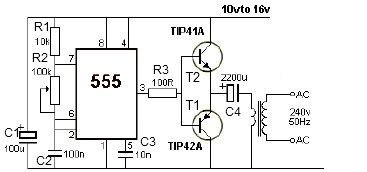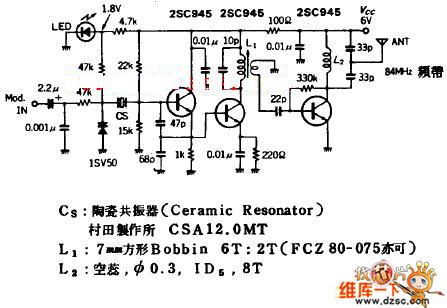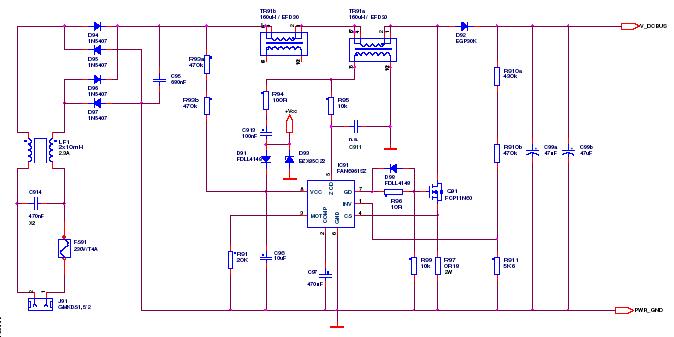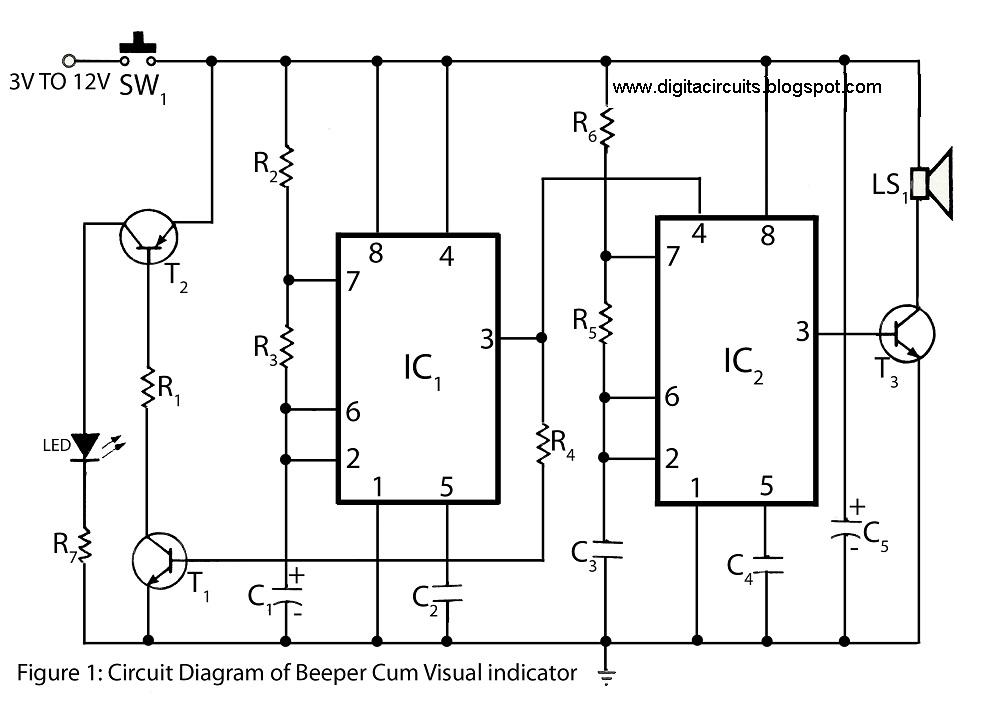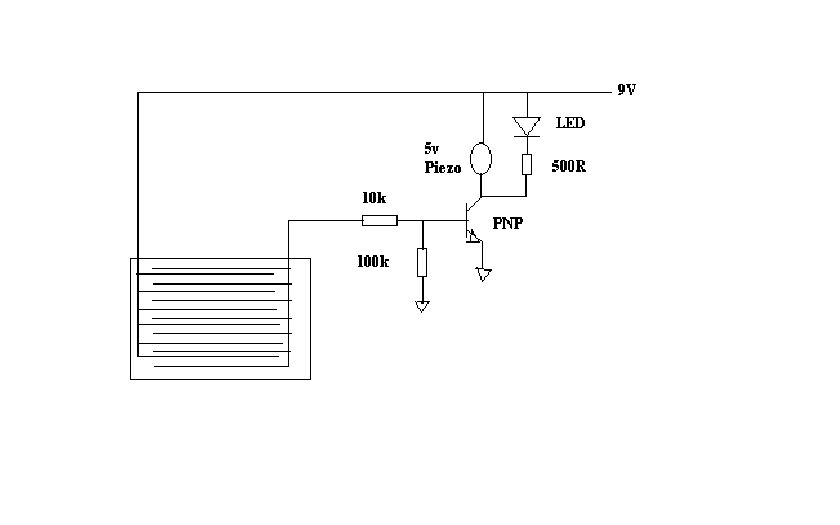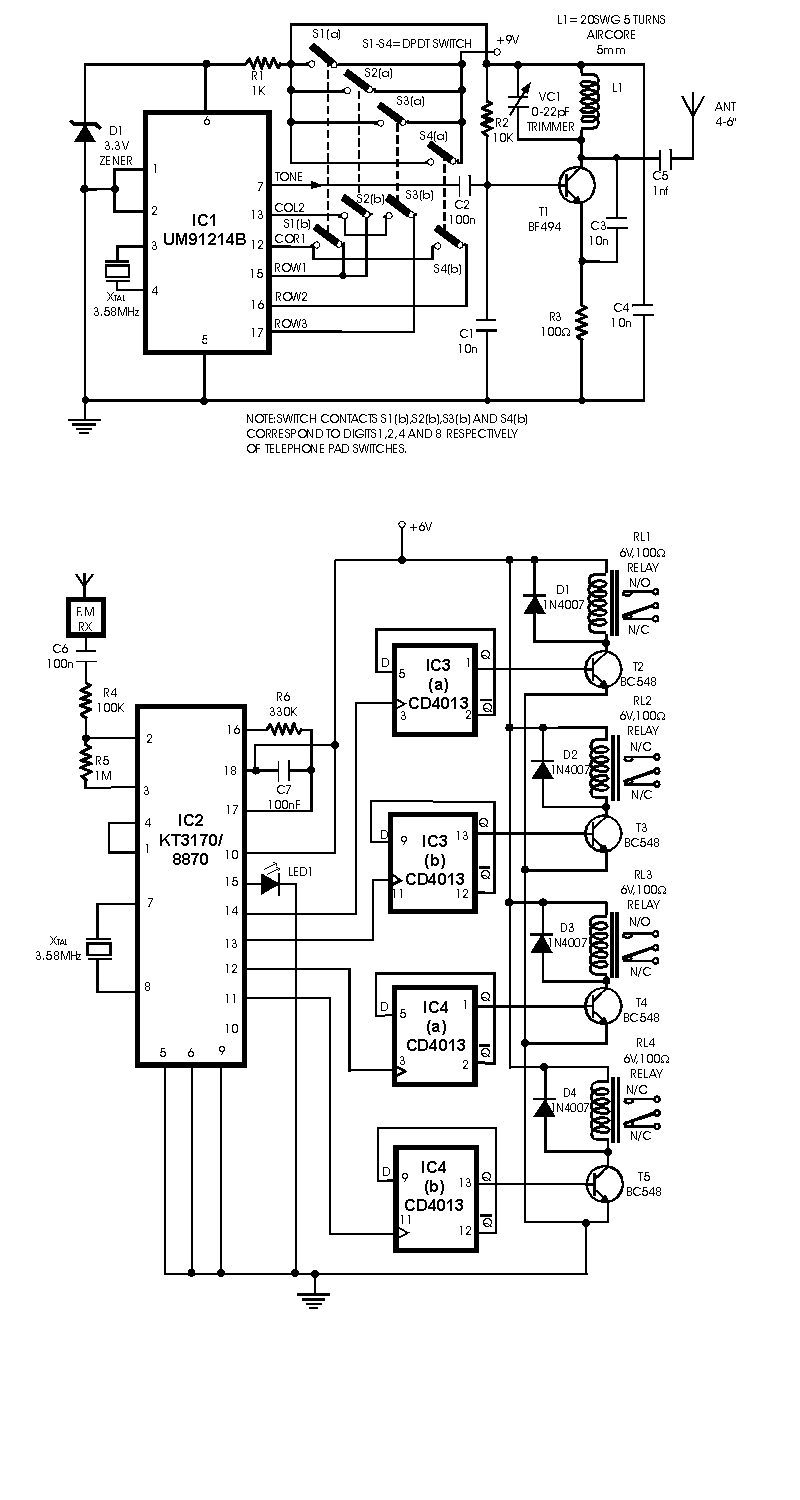
water level indicator using 7 segment display
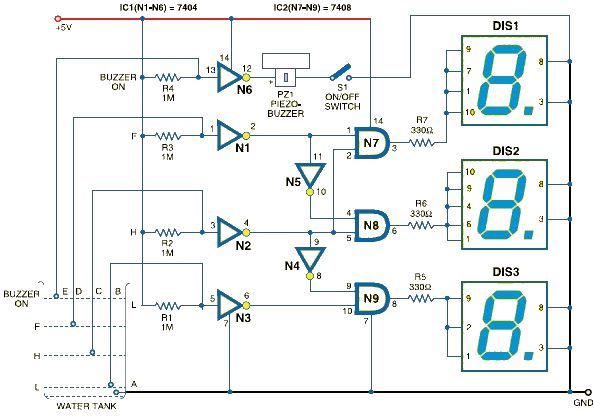
This schematic outlines a simple electronic circuit designed to indicate water levels using a 7-segment display. The circuit shows water levels by displaying 'L', 'H', and 'F' for low, half, and full levels, respectively. It is based on the 7408 quad two-input AND gates IC, which contains four independent gates, and a 7404 hex inverting gates IC. The circuit employs five level sensors to detect various water levels: one for common ground, one for low, one for half, one for high, and one for overflow.
The water level indicator circuit utilizes a straightforward design to monitor and display the water level in a tank. The primary components include a 7-segment display, which serves as the visual output for the user, and two integrated circuits (ICs) that handle the logic operations necessary for interpreting the sensor signals.
The 7408 quad two-input AND gates IC is crucial for this circuit, as it processes the signals from the level sensors. Each sensor corresponds to a specific water level: the low sensor triggers when the water level falls below a predetermined threshold, the half sensor activates when the tank reaches the halfway point, and the high sensor signals when the tank is full. The overflow sensor serves as an additional safety feature, ensuring that if the water level exceeds the tank's capacity, an alert is displayed.
The 7404 hex inverter IC complements the logic operations by inverting the signals received from the sensors. This inversion is essential for ensuring that the correct levels are indicated on the 7-segment display. For instance, when the low sensor is activated, the AND gates process this input and send a signal to the display to show 'L'. Similarly, the circuit logic ensures that only one indicator is active at any given time, preventing confusion in the displayed water level.
The five level sensors are typically arranged in a vertical configuration within the tank, allowing them to detect varying water levels effectively. The common ground sensor establishes a reference point for the other sensors, ensuring accurate readings. The overall design is efficient and cost-effective, making it suitable for various applications, including home water tanks, aquariums, and industrial water management systems.Using this schematic electronic project can be designed a very simple water level indicator electronic circuit that uses a 7-segment display to indicate the water level (low, half and full)in the tank. This water level indicator electronic circuit shows the water level by displaying L, H and F for low, half and full, respectively.
This water level indicator electronic circuit is based on the 7408 quad two inputs and gates IC (that contains four input independent gates) and a 7404 hex inverting gates IC. The circuit uses five level sensors to sense the different water levels ( one for common GND, one for low, one for high one for half and one for overflow ).
🔗 External reference
The water level indicator circuit utilizes a straightforward design to monitor and display the water level in a tank. The primary components include a 7-segment display, which serves as the visual output for the user, and two integrated circuits (ICs) that handle the logic operations necessary for interpreting the sensor signals.
The 7408 quad two-input AND gates IC is crucial for this circuit, as it processes the signals from the level sensors. Each sensor corresponds to a specific water level: the low sensor triggers when the water level falls below a predetermined threshold, the half sensor activates when the tank reaches the halfway point, and the high sensor signals when the tank is full. The overflow sensor serves as an additional safety feature, ensuring that if the water level exceeds the tank's capacity, an alert is displayed.
The 7404 hex inverter IC complements the logic operations by inverting the signals received from the sensors. This inversion is essential for ensuring that the correct levels are indicated on the 7-segment display. For instance, when the low sensor is activated, the AND gates process this input and send a signal to the display to show 'L'. Similarly, the circuit logic ensures that only one indicator is active at any given time, preventing confusion in the displayed water level.
The five level sensors are typically arranged in a vertical configuration within the tank, allowing them to detect varying water levels effectively. The common ground sensor establishes a reference point for the other sensors, ensuring accurate readings. The overall design is efficient and cost-effective, making it suitable for various applications, including home water tanks, aquariums, and industrial water management systems.Using this schematic electronic project can be designed a very simple water level indicator electronic circuit that uses a 7-segment display to indicate the water level (low, half and full)in the tank. This water level indicator electronic circuit shows the water level by displaying L, H and F for low, half and full, respectively.
This water level indicator electronic circuit is based on the 7408 quad two inputs and gates IC (that contains four input independent gates) and a 7404 hex inverting gates IC. The circuit uses five level sensors to sense the different water levels ( one for common GND, one for low, one for high one for half and one for overflow ).
🔗 External reference
